Bodies without Organs in the Gospel of Mark
Published: Aug 2022
£50.00
In this stimulating monograph, Villalobos Mendoza leads the diligent reader to a re-appreciation of Mark’s Jesus as an enabler of human freedom. The freedom that ought to be every human’s birthright is, we know, everywhere constrained by custom, regulation and law. But for the Jesus of Mark, order itself is disruptive, boundaries are transgressed, hierarchies are dismantled, and the bodies of humans, animals and trees are interconnected.
Villalobos Mendoza—taking his theoretical inspiration from the philosopher Gilles Deleuze—proposes Mark’s Jesus as the first figure to accomplish the ‘Body without Organs’ (BwO), the one who frees us from the oppression of the priest / institution / power / hierarchy. According to Deleuze, ‘the body is the body / it is all by itself / and has no need of organs / the body is never an organism / organisms are the enemies of the body’. This notion is helpful for understanding Jesus as the BwO, how Jesus’ body affects other bodies, and how those bodies function (or assemble) as an interkingdom of no-bodies.
The analysis of several Markan texts (Mk. 3.20- 35; 6.1-6; 1.12-13; 13.32-35; 14.27; 11.12-14; 14.51-52; 15.42-47; 16.1-8), is done through the interpretative lens of Deleuze and Félix Guattari whose co-authored works deliberately self-create new philosophical constructs, alongside BwO, such as: ‘any-space-whatever’, ‘de-re-territorialization’, ‘assemblage’, ‘rhizome’, ‘threes’, ‘Becoming(s)’, ‘interkingdoms’, ‘affects’, ‘people-yet-to-come’, ‘nomadism’, ‘eternal return’, ‘repetition’. By putting into dialogue insights from Deleuze and the Markan Jesus’ understanding of the kingdom of God, Villalobos Mendoza suggests the character of Jesus as the exemplary opponent of the apparatus of state which: organized, signified, subdued and subjected the human as well as the nonhuman ‘body’. This representation of Jesus creates a new interplay with the riddle of Deleuzean thought that argues that God and the judgement of God are the eternal enemy of the BwO!
Bodies without Organs in the Gospel of Mark
£50.00
In this stimulating monograph, Villalobos Mendoza leads the diligent reader to a re-appreciation of Mark’s Jesus as an enabler of human freedom. The freedom that ought to be every human’s birthright is, we know, everywhere constrained by custom, regulation and law. But for the Jesus of Mark, order itself is disruptive, boundaries are transgressed, hierarchies are dismantled, and the bodies of humans, animals and trees are interconnected.
Villalobos Mendoza—taking his theoretical inspiration from the philosopher Gilles Deleuze—proposes Mark’s Jesus as the first figure to accomplish the ‘Body without Organs’ (BwO), the one who frees us from the oppression of the priest / institution / power / hierarchy. According to Deleuze, ‘the body is the body / it is all by itself / and has no need of organs / the body is never an organism / organisms are the enemies of the body’. This notion is helpful for understanding Jesus as the BwO, how Jesus’ body affects other bodies, and how those bodies function (or assemble) as an interkingdom of no-bodies.
The analysis of several Markan texts (Mk. 3.20- 35; 6.1-6; 1.12-13; 13.32-35; 14.27; 11.12-14; 14.51-52; 15.42-47; 16.1-8), is done through the interpretative lens of Deleuze and Félix Guattari whose co-authored works deliberately self-create new philosophical constructs, alongside BwO, such as: ‘any-space-whatever’, ‘de-re-territorialization’, ‘assemblage’, ‘rhizome’, ‘threes’, ‘Becoming(s)’, ‘interkingdoms’, ‘affects’, ‘people-yet-to-come’, ‘nomadism’, ‘eternal return’, ‘repetition’. By putting into dialogue insights from Deleuze and the Markan Jesus’ understanding of the kingdom of God, Villalobos Mendoza suggests the character of Jesus as the exemplary opponent of the apparatus of state which: organized, signified, subdued and subjected the human as well as the nonhuman ‘body’. This representation of Jesus creates a new interplay with the riddle of Deleuzean thought that argues that God and the judgement of God are the eternal enemy of the BwO!
Obadiah and Haggai
Published: May 2022
£15.00 – £35.00
This new commentary questions whether Obadiah’s ‘vision’ is a prophetic book in the traditional sense, or a communal appeal to God to deal with Edom, similar to the cry in Psalm 137.7-9. Ogden suggests an editorial structure for the document built around the numerically central v. 11 that provides a focus for the appeal, one which seeks an immediate response from God. The conclusion is that this is fundamentally an appeal for God to act, rather than a promise of a future possibility.
The Haggai commentary argues that the document is a collection of loosely related stories about the prophet Haggai’s encounters with Zerubbabel and
Joshua, Judaean leaders who did not share the prophet’s sense of urgency about providing God with a refurbished house. Haggai is seen as a somewhat distant figure whose narrow worldview and theology saw him in conflict with the openness of the two community leaders. Haggai’s explanation for the crisis confronting the community showed little concern for its impact on the community, his calls to ‘Consider…’ pressuring them to conform to his plan for God’s ‘house’.
Both commentaries take the view that from the time of the destruction of Jerusalem and its temple in 587 bce, and for many many years thereafter, there was a wide range of oral material in circulation that gave expression to Judaean pain and anger at what had happened, and to the deceitfulness of its ‘brother’ Edom’s participation in the demise of the southern kingdom. The editors of both Obadiah and Haggai drew upon that range of oral stories that existed in multiple forms to make their individual reports. Both documents have deep roots in Deuteronomic and nationalistic ideology.
Ogden provides a reading that prioritizes the rhetorical elements in the Hebrew text while noting its historical, social and theological settings.
Obadiah and Haggai
£15.00 – £35.00
This new commentary questions whether Obadiah’s ‘vision’ is a prophetic book in the traditional sense, or a communal appeal to God to deal with Edom, similar to the cry in Psalm 137.7-9. Ogden suggests an editorial structure for the document built around the numerically central v. 11 that provides a focus for the appeal, one which seeks an immediate response from God. The conclusion is that this is fundamentally an appeal for God to act, rather than a promise of a future possibility.
The Haggai commentary argues that the document is a collection of loosely related stories about the prophet Haggai’s encounters with Zerubbabel and
Joshua, Judaean leaders who did not share the prophet’s sense of urgency about providing God with a refurbished house. Haggai is seen as a somewhat distant figure whose narrow worldview and theology saw him in conflict with the openness of the two community leaders. Haggai’s explanation for the crisis confronting the community showed little concern for its impact on the community, his calls to ‘Consider…’ pressuring them to conform to his plan for God’s ‘house’.
Both commentaries take the view that from the time of the destruction of Jerusalem and its temple in 587 bce, and for many many years thereafter, there was a wide range of oral material in circulation that gave expression to Judaean pain and anger at what had happened, and to the deceitfulness of its ‘brother’ Edom’s participation in the demise of the southern kingdom. The editors of both Obadiah and Haggai drew upon that range of oral stories that existed in multiple forms to make their individual reports. Both documents have deep roots in Deuteronomic and nationalistic ideology.
Ogden provides a reading that prioritizes the rhetorical elements in the Hebrew text while noting its historical, social and theological settings.
Nehemiah: A Commentary
Published: Oct 2021
£60.00
Lisbeth Fried’s commentary on Nehemiah is the second instalment of her two-volume commentary on Ezra–Nehemiah. The first instalment, Ezra, was published by Sheffield Phoenix in 2015. Like her commentary on Ezra, Nehemiah too takes full advantage of recent results in archaeology and numismatics, as well as in the mechanisms of Persian and Hellenistic rule, and in the influence of the Hellenistic and Maccabean Wars on Jewish writings.
Like her Ezra, the present volume includes a new translation of the book of Nehemiah, plus text-critical notes on each verse which compare and contrast the Greek, Latin and Syriac versions. The Introduction and extensive chapter commentaries provide a discussion of the larger historical and literary issues.
Although not finalized until the Maccabean period, the book of Nehemiah contains a temple foundation document from the time of Darius I, a story of rebuilding and dedicating a city wall around Jerusalem in the mid-fifth century, and a memoir from a fifth-century governor of Judah. Numerous additions and lists that date from the Hellenistic and Maccabean periods complete the book.
Fried concludes that the book of Nehemiah contains two separate first-person reports—one by the wall-builder, wine steward of Artaxerxes I, whose name we do not know, and one by Yeho’ezer, a fifth-century governor of Judah. We know his name from seals found at the governor’s mansion at Ramat Raḥel. Nehemiah, whose full name was actually Nehemiah Attiršata ben Ḥacaliah, neither built the wall around Jerusalem nor served as a fifth-century governor of Judah, Fried argues. Rather, he was a Persian Jew who had charge of the temple priesthood under Zerubbabel in the days of Darius I.
Fried’s commentary promises to revolutionize how we read the book of Nehemiah.
Nehemiah: A Commentary
£60.00
Lisbeth Fried’s commentary on Nehemiah is the second instalment of her two-volume commentary on Ezra–Nehemiah. The first instalment, Ezra, was published by Sheffield Phoenix in 2015. Like her commentary on Ezra, Nehemiah too takes full advantage of recent results in archaeology and numismatics, as well as in the mechanisms of Persian and Hellenistic rule, and in the influence of the Hellenistic and Maccabean Wars on Jewish writings.
Like her Ezra, the present volume includes a new translation of the book of Nehemiah, plus text-critical notes on each verse which compare and contrast the Greek, Latin and Syriac versions. The Introduction and extensive chapter commentaries provide a discussion of the larger historical and literary issues.
Although not finalized until the Maccabean period, the book of Nehemiah contains a temple foundation document from the time of Darius I, a story of rebuilding and dedicating a city wall around Jerusalem in the mid-fifth century, and a memoir from a fifth-century governor of Judah. Numerous additions and lists that date from the Hellenistic and Maccabean periods complete the book.
Fried concludes that the book of Nehemiah contains two separate first-person reports—one by the wall-builder, wine steward of Artaxerxes I, whose name we do not know, and one by Yeho’ezer, a fifth-century governor of Judah. We know his name from seals found at the governor’s mansion at Ramat Raḥel. Nehemiah, whose full name was actually Nehemiah Attiršata ben Ḥacaliah, neither built the wall around Jerusalem nor served as a fifth-century governor of Judah, Fried argues. Rather, he was a Persian Jew who had charge of the temple priesthood under Zerubbabel in the days of Darius I.
Fried’s commentary promises to revolutionize how we read the book of Nehemiah.
Sequencing the Hebrew Bible: The Order of the Books
Published: July 2021
£55.00
If the order of the Hebrew Bible's books is significant, as many believe, why did differing arrangements of the Hebrew Bible emerge over time? This is a crucial question for Bible readers generally and especially for scholars of compilational criticism —the study of how the books of the Hebrew Bible were arranged in their various orders. Yet few compilational critics offer a solution to this problem and several fail even to recognize the issue. Sequencing the Hebrew Bible makes the novel proposal that multiple orders are part of the compositional intent of the framers of the Hebrew Bible. That is, those responsible for producing the final form of the Hebrew Bible's text created multiple ways in which its books could be meaningfully arranged. No single arrangement, as found in ancient manuscripts and lists of the books, can fully account for the compositional intent of these framers. The task of the compilational critic is to identify these arrangements, classify them, and evaluate the effect of these varying arrangements. This solution has implications both for the production of modern Bibles and for biblical theology. While some interested in compilational criticism argue that modern Bibles should be reorganized to reflect earlier arrangements of the biblical books, this study would suggest that such attempts would be limited in value. For only one of the several attested arrangements could be presented in any printed Bible. As for the idea of attempting to arrange the Bible chronologically, this study argues that to do so would inhibit the reader's understanding of the design of the biblical authors. Since biblical theology bridges the gap between historical-critical and theological studies, internal tensions between historical and theological analyses are often apparent within biblical theology. Compilational criticism helps to relieve these tensions by showing how theology underlies the formation of the Hebrew Bible.
Sequencing the Hebrew Bible: The Order of the Books
£55.00
If the order of the Hebrew Bible's books is significant, as many believe, why did differing arrangements of the Hebrew Bible emerge over time? This is a crucial question for Bible readers generally and especially for scholars of compilational criticism —the study of how the books of the Hebrew Bible were arranged in their various orders. Yet few compilational critics offer a solution to this problem and several fail even to recognize the issue. Sequencing the Hebrew Bible makes the novel proposal that multiple orders are part of the compositional intent of the framers of the Hebrew Bible. That is, those responsible for producing the final form of the Hebrew Bible's text created multiple ways in which its books could be meaningfully arranged. No single arrangement, as found in ancient manuscripts and lists of the books, can fully account for the compositional intent of these framers. The task of the compilational critic is to identify these arrangements, classify them, and evaluate the effect of these varying arrangements. This solution has implications both for the production of modern Bibles and for biblical theology. While some interested in compilational criticism argue that modern Bibles should be reorganized to reflect earlier arrangements of the biblical books, this study would suggest that such attempts would be limited in value. For only one of the several attested arrangements could be presented in any printed Bible. As for the idea of attempting to arrange the Bible chronologically, this study argues that to do so would inhibit the reader's understanding of the design of the biblical authors. Since biblical theology bridges the gap between historical-critical and theological studies, internal tensions between historical and theological analyses are often apparent within biblical theology. Compilational criticism helps to relieve these tensions by showing how theology underlies the formation of the Hebrew Bible.
The Ancient Near East in the Nineteenth Century: III. Fantasy and Alternative Histories
Published: Mar 2021
£22.00 – £70.00
At the beginning of the nineteenth century, little was known of the ancient Near East except for what was preserved in the Bible and classical literature. By the end of the nineteenth century, an amazing transformation had occurred: the basic outline of ancient Near Eastern history was understood and the material culture of the region was recognizable to the general public. This three-volume study explores the various ways that non-specialists would have encountered ancient Egypt, Mesopotamia, and the Holy Land and how they derived and constructed meaning from those discoveries. McGeough challenges the simplistic view that the experience of the ancient Near East was solely a matter of 'othering' and shows how different people claimed the Near East as their own space and how connections were drawn between the ancient and contemporary worlds.
Volume III argues that fiction and fantasy play an important role in establishing expectations about the past. Changing sensitivities towards realism in art meant that imaginary visions were charged with an archaeological aesthetic. Orientalist painting offered seemingly realistic glimpses of ancient life. Stage plays and opera used the ancient Near East for performances that explored contemporary issues. Mummy stories evolved from humorous time-travel tales into horror fiction rooted in fears of materialism, and adventure novels ruminated on the obligations and dangers of empire.
Alongside these explicitly fictional modes of thinking about the past, the nineteenth century saw a rise in popularity of esoteric thinking. People offered alternative versions of ancient history, imagining that ancient religious practices continued into the present, through secret societies like the Freemasons and the Rosicrucians or in the new movements of Mormonism and Theosophy. Volume III ends by examining the interpretations of the Near East offered by Sigmund Freud and H.P. Lovecraft, showing how these two figures influenced later popular experiences of the ancient Near East.
The Ancient Near East in the Nineteenth Century: III. Fantasy and Alternative Histories
£22.00 – £70.00
At the beginning of the nineteenth century, little was known of the ancient Near East except for what was preserved in the Bible and classical literature. By the end of the nineteenth century, an amazing transformation had occurred: the basic outline of ancient Near Eastern history was understood and the material culture of the region was recognizable to the general public. This three-volume study explores the various ways that non-specialists would have encountered ancient Egypt, Mesopotamia, and the Holy Land and how they derived and constructed meaning from those discoveries. McGeough challenges the simplistic view that the experience of the ancient Near East was solely a matter of 'othering' and shows how different people claimed the Near East as their own space and how connections were drawn between the ancient and contemporary worlds.
Volume III argues that fiction and fantasy play an important role in establishing expectations about the past. Changing sensitivities towards realism in art meant that imaginary visions were charged with an archaeological aesthetic. Orientalist painting offered seemingly realistic glimpses of ancient life. Stage plays and opera used the ancient Near East for performances that explored contemporary issues. Mummy stories evolved from humorous time-travel tales into horror fiction rooted in fears of materialism, and adventure novels ruminated on the obligations and dangers of empire.
Alongside these explicitly fictional modes of thinking about the past, the nineteenth century saw a rise in popularity of esoteric thinking. People offered alternative versions of ancient history, imagining that ancient religious practices continued into the present, through secret societies like the Freemasons and the Rosicrucians or in the new movements of Mormonism and Theosophy. Volume III ends by examining the interpretations of the Near East offered by Sigmund Freud and H.P. Lovecraft, showing how these two figures influenced later popular experiences of the ancient Near East.
The Ancient Near East in the Nineteenth Century: II. Collecting, Constructing, and Curating
Published: Mar 2021
£23.00 – £70.00
At the beginning of the nineteenth century, little was known of the ancient Near East except for what was preserved in the Bible and classical literature. By the end of the nineteenth century, an amazing transformation had occurred: the basic outline of ancient Near Eastern history was understood and the material culture of the region was recognizable to the general public. This three-volume study explores the various ways that non-specialists would have encountered ancient Egypt, Mesopotamia, and the Holy Land and how they derived and constructed meaning from those discoveries. McGeough challenges the simplistic view that the experience of the ancient Near East was solely a matter of 'othering' and shows how different people claimed the Near East as their own space and how connections were drawn between the ancient and contemporary worlds.
Volume II examines the different ways that non-specialists encountered the materiality of the ancient Near East over the course of the nineteenth century. During this time, people collected artifacts while traveling in the region or paid to see the collections that others brought back. The public experienced the ancient world in museum exhibits that privileged 'real' artifacts in a new context or in hyper-real displays (like the Crystal Palace) where whole buildings from the ancient Near East were reconstructed. Men and women dressed as biblical characters in travelling fairs or spent an evening unwrapping a mummy. Individuals bought Assyriological souvenirs and employed Egyptian styles in their design, first in higher quality designer products and later in novelty items. Egyptian temples provided the architectural inspiration for buildings in London and the ancient use of colour was a strong argument for reimagining Victorian style. The adoption of Egypt, especially, in the world's-fair phenomenon linked the ancient Near East with a global future in which change was naturalized and consumers were taught not to be afraid of the transformations brought by the industrial age.
The Ancient Near East in the Nineteenth Century: II. Collecting, Constructing, and Curating
£23.00 – £70.00
At the beginning of the nineteenth century, little was known of the ancient Near East except for what was preserved in the Bible and classical literature. By the end of the nineteenth century, an amazing transformation had occurred: the basic outline of ancient Near Eastern history was understood and the material culture of the region was recognizable to the general public. This three-volume study explores the various ways that non-specialists would have encountered ancient Egypt, Mesopotamia, and the Holy Land and how they derived and constructed meaning from those discoveries. McGeough challenges the simplistic view that the experience of the ancient Near East was solely a matter of 'othering' and shows how different people claimed the Near East as their own space and how connections were drawn between the ancient and contemporary worlds.
Volume II examines the different ways that non-specialists encountered the materiality of the ancient Near East over the course of the nineteenth century. During this time, people collected artifacts while traveling in the region or paid to see the collections that others brought back. The public experienced the ancient world in museum exhibits that privileged 'real' artifacts in a new context or in hyper-real displays (like the Crystal Palace) where whole buildings from the ancient Near East were reconstructed. Men and women dressed as biblical characters in travelling fairs or spent an evening unwrapping a mummy. Individuals bought Assyriological souvenirs and employed Egyptian styles in their design, first in higher quality designer products and later in novelty items. Egyptian temples provided the architectural inspiration for buildings in London and the ancient use of colour was a strong argument for reimagining Victorian style. The adoption of Egypt, especially, in the world's-fair phenomenon linked the ancient Near East with a global future in which change was naturalized and consumers were taught not to be afraid of the transformations brought by the industrial age.
The Bible and Money: Economy and Socioeconomic Ethics in the Bible
Published: Nov 2020
£70.00
What does the Bible say about money? This volume presents the researches of 18 international biblical scholars at Ansgarskolen«s Norwegian Summer Academy for Biblical Studies. Papers include:
The Prophets on Trade: Did They Consider it a Canaanite Affair?
Two Categories of Loans in the Old Testament á Give Willingly and Do Not Expect Anything? A Biblical View on Loans and Interest
Government and Economy in the Hebrew Bible: Taxes and Related Issues á State and Temple Economy in the Levant in the Persian and Hellenistic Periods
Economics and Poverty: Negotiating the Spectrum of Personal Wealth or Shared Resources
Proportionate and Sufficient Wealth: Financial Transparency in Paul's Collection for the Saints in Jerusalem á Engaging the New Testament and the Welfare State
Divine Plenty, Human Thriftiness: A Canonical Reading of (Un)Limited Resources This unusual volume is a useful resource for researchers, but also a coursebook to be used in the classroom and a comprehensive introduction to biblical economic ethics in general.
The Bible and Money: Economy and Socioeconomic Ethics in the Bible
£70.00
What does the Bible say about money? This volume presents the researches of 18 international biblical scholars at Ansgarskolen«s Norwegian Summer Academy for Biblical Studies. Papers include:
The Prophets on Trade: Did They Consider it a Canaanite Affair?
Two Categories of Loans in the Old Testament á Give Willingly and Do Not Expect Anything? A Biblical View on Loans and Interest
Government and Economy in the Hebrew Bible: Taxes and Related Issues á State and Temple Economy in the Levant in the Persian and Hellenistic Periods
Economics and Poverty: Negotiating the Spectrum of Personal Wealth or Shared Resources
Proportionate and Sufficient Wealth: Financial Transparency in Paul's Collection for the Saints in Jerusalem á Engaging the New Testament and the Welfare State
Divine Plenty, Human Thriftiness: A Canonical Reading of (Un)Limited Resources This unusual volume is a useful resource for researchers, but also a coursebook to be used in the classroom and a comprehensive introduction to biblical economic ethics in general.
Writing and Reading to Survive: Biblical and Contemporary Trauma Narratives in Conversation
Published: July 2020
£50.00
Writing and Reading to Survive brings a number of trauma narratives from the Hebrew Bible into conversation with contemporary trauma narratives, exploring how these ancient and modern-day stories mitigate the experiences of pain and suffering in the face of trauma.
Focusing on the intersection between trauma and gender, the trauma narratives here include biblical narratives emerging from the cataclysmic events that all but destroyed the people of Judah at the time of the sixth-century bce invasion and exile. They also include examples of 'hidden' or 'common' or 'more mundane quiet' traumas that are reflective of women's experience. In both biblical as well as contemporary trauma narratives, one sees evidence of insidious trauma associated with the systemic violence of a deeply patriarchal society; the secret trauma of reproductive loss that connects with many women's lives both then and now; the ever-present reality of gender-based violence.
To read contemporary trauma narratives alongside biblical trauma narratives can have the effect of expanding readers' vision, perhaps introducing them to texts that yield fresh insights into often painful topics associated with women's experience of trauma. Continuing the conversation on the importance of trauma hermeneutics for reading biblical literature, the trauma narratives represented in this monograph serve as a safe haven for those, in past and present contexts, who are reeling from the effects of severe trauma, to voice the unspeakable, and to move towards healing and recovery by writing and reading to survive.
Writing and Reading to Survive is the first volume in a new series from Sheffield Phoenix Press, the Trauma Bible.
Writing and Reading to Survive: Biblical and Contemporary Trauma Narratives in Conversation
£50.00
Writing and Reading to Survive brings a number of trauma narratives from the Hebrew Bible into conversation with contemporary trauma narratives, exploring how these ancient and modern-day stories mitigate the experiences of pain and suffering in the face of trauma.
Focusing on the intersection between trauma and gender, the trauma narratives here include biblical narratives emerging from the cataclysmic events that all but destroyed the people of Judah at the time of the sixth-century bce invasion and exile. They also include examples of 'hidden' or 'common' or 'more mundane quiet' traumas that are reflective of women's experience. In both biblical as well as contemporary trauma narratives, one sees evidence of insidious trauma associated with the systemic violence of a deeply patriarchal society; the secret trauma of reproductive loss that connects with many women's lives both then and now; the ever-present reality of gender-based violence.
To read contemporary trauma narratives alongside biblical trauma narratives can have the effect of expanding readers' vision, perhaps introducing them to texts that yield fresh insights into often painful topics associated with women's experience of trauma. Continuing the conversation on the importance of trauma hermeneutics for reading biblical literature, the trauma narratives represented in this monograph serve as a safe haven for those, in past and present contexts, who are reeling from the effects of severe trauma, to voice the unspeakable, and to move towards healing and recovery by writing and reading to survive.
Writing and Reading to Survive is the first volume in a new series from Sheffield Phoenix Press, the Trauma Bible.
An Encomium for Jesus: Luke, Rhetoric, and the Story of Jesus
Published: May 2020
£50.00
Luke's narrative about Jesus followed the conventions for ancient biography. Trained in rhetoric, Luke employed the genre of the encomium, which regularly used to showcase biographical aspects of a person's life worthy of honour. An Encomium for Jesus argues that Luke mastered the genre, its conventional topics, and specific instructions for composing one.
The usual topics of an encomium served as Luke's template to organize and narrate the life of Jesus. The first topic,'origins', displayed Jesus' worth in terms of his geographical origins (Bethlehem) and generational origins (son of David, heir to his throne). His genealogy confirms a very noble ancestry. Angels and prophets speak to the importance of his birth, all conventional items.
Second, Jesus was raised as an observant Israelite: circumcised, dedicated, and an annual participant at Passover; he customarily attended synagogue. Although precocious, he lacked training in a familial virtue, which he learned subsequently by obedience to his parents.
An encomium focused on a person's actions, generally described in terms of the canonical virtues, wisdom, courage, justice and self-control. Luke adeptly portrayed Jesus' actions according to these virtues, correctly presuming that his audience would label this or that action as virtuous, a safe assumption. Jesus was wise in understanding people, courageous in facing death, just in his teaching, and moderate in controlling emotional reactions.
An encomium should also speak of a person's death, a conventional feature in funeral oratory. Luke employed the tradition of the 'noble death' to highlight aspects of Jesus' death, especially its voluntary and beneficial aspects. Most importantly, he narrated the many posthumous honours awarded Jesus, as cited in Acts: he did not see death; God vindicated and enthroned him; and he became the Author of salvation. Thus Luke composed a conventional Encomium for Jesus.
An Encomium for Jesus: Luke, Rhetoric, and the Story of Jesus
£50.00
Luke's narrative about Jesus followed the conventions for ancient biography. Trained in rhetoric, Luke employed the genre of the encomium, which regularly used to showcase biographical aspects of a person's life worthy of honour. An Encomium for Jesus argues that Luke mastered the genre, its conventional topics, and specific instructions for composing one.
The usual topics of an encomium served as Luke's template to organize and narrate the life of Jesus. The first topic,'origins', displayed Jesus' worth in terms of his geographical origins (Bethlehem) and generational origins (son of David, heir to his throne). His genealogy confirms a very noble ancestry. Angels and prophets speak to the importance of his birth, all conventional items.
Second, Jesus was raised as an observant Israelite: circumcised, dedicated, and an annual participant at Passover; he customarily attended synagogue. Although precocious, he lacked training in a familial virtue, which he learned subsequently by obedience to his parents.
An encomium focused on a person's actions, generally described in terms of the canonical virtues, wisdom, courage, justice and self-control. Luke adeptly portrayed Jesus' actions according to these virtues, correctly presuming that his audience would label this or that action as virtuous, a safe assumption. Jesus was wise in understanding people, courageous in facing death, just in his teaching, and moderate in controlling emotional reactions.
An encomium should also speak of a person's death, a conventional feature in funeral oratory. Luke employed the tradition of the 'noble death' to highlight aspects of Jesus' death, especially its voluntary and beneficial aspects. Most importantly, he narrated the many posthumous honours awarded Jesus, as cited in Acts: he did not see death; God vindicated and enthroned him; and he became the Author of salvation. Thus Luke composed a conventional Encomium for Jesus.
Toward a Canon-Conscious Reading of the Bible: Exploring the History and Hermeneutics of the Canon
Published: Mar 2020
£22.00 – £70.00
Two distinct questions about the canon of the Bible can be raised: (1) How did the biblical canon come to be?, and (2) What effect does that canon have on its readers? The former is a historical question about the formation of the biblical canon; the latter is a hermeneutical question about the function of the biblical canon. Though these questions have often been pursued in virtual isolation from one another, Spellman argues that there are considerable gains from observing the interconnections between the two lines of inquiry.
On the historical question of the origin of the canon, Spellman asks, Is the shape of this collection an accident of history or a result of intelligent design? He concludes that canon-consciousness played an important role in the formation of the canon, even impinging on the work of the biblical authors themselves. On the hermeneutical question, the communities of readers of the Bible may also be shown to have been directed by their own canon-consciousness, using it as a guide in their interpretative task.
In this interdisciplinary work, Spellman marshals historical, theological and hermeneutical resources in order to paint a picture of how the concept of canon can enrich reading communities of today.
Toward a Canon-Conscious Reading of the Bible: Exploring the History and Hermeneutics of the Canon
£22.00 – £70.00
Two distinct questions about the canon of the Bible can be raised: (1) How did the biblical canon come to be?, and (2) What effect does that canon have on its readers? The former is a historical question about the formation of the biblical canon; the latter is a hermeneutical question about the function of the biblical canon. Though these questions have often been pursued in virtual isolation from one another, Spellman argues that there are considerable gains from observing the interconnections between the two lines of inquiry.
On the historical question of the origin of the canon, Spellman asks, Is the shape of this collection an accident of history or a result of intelligent design? He concludes that canon-consciousness played an important role in the formation of the canon, even impinging on the work of the biblical authors themselves. On the hermeneutical question, the communities of readers of the Bible may also be shown to have been directed by their own canon-consciousness, using it as a guide in their interpretative task.
In this interdisciplinary work, Spellman marshals historical, theological and hermeneutical resources in order to paint a picture of how the concept of canon can enrich reading communities of today.
The Dictionary of Classical Hebrew Revised. II. Beth-Waw
Published: Nov 2019
£150.00
The Dictionary of Classical Hebrew Revised (DCHR) is a complete revision (2018–2028) in nine volumes, with over 100,000 improvements, of the original DCH, i.e. Dictionary of Classical Hebrew (1993–2016). This second Volume contains some 2,071 words (lemmas), of which 838 are 'new words' (i.e. not in the standard lexicon of BDB); DCHR II thus adds c. 60% to the number of words for Beth —Waw that are to be found in other Hebrew dictionaries. This revised volume is 40% longer than DCH II (1995), which it replaces. The Dictionary of Classical Hebrew Revised , when completed, will contain more than 6,420 Hebrew words not in BDB, and will refer to many newly published texts, including 540 Dead Sea Scrolls and 4,000 ancient Hebrew inscriptions. New features in DCHR include: a notation of 4,285 byforms (words with the same meaning and similar form) identified for the first time; 717 verbal nouns (nouns derived from a verb) with their own articles (not previously shown in Hebrew lexica), 345 denominative verbs (verbs derived from a noun), and the semantic field to which every word belongs (a totally new feature for Hebrew dictionaries). Data on synonyms have been greatly expanded, and loanwords from other languages included. Articles on personal names show (for the first time) all short forms, long forms, and alternative forms of each name, the Bibliography has been updated and expanded, and 35,000 emendations of biblical texts noted. Every occurrence of each word in Classical Hebrew is noted. All the subjects and objects of verbs are listed, and the verbs used with each noun, as well as all nouns used in a construct (genitive) relation with another noun. As with DCH , every Hebrew word in the Dictionary (except for the variant forms of a word, the byforms and the sections on synonyms) is followed immediately by an English translation, so that the Dictionary can be easily understood by a person with little or no Hebrew. When completed, DCHR will be 5 million words in length (equivalent to 50 standard-size books), 25% longer than DCH , and 4 times the length of BDB and HALOT . The nine volumes of DCHR are expected to be published at intervals of approximately one year after the first volume in August 2018. There is a special discount price for customers subscribing to the DCHR set, and an easy payment plan (details from phoenix.bibs@sheffield.ac.uk).
The Dictionary of Classical Hebrew Revised. II. Beth-Waw
£150.00
The Dictionary of Classical Hebrew Revised (DCHR) is a complete revision (2018–2028) in nine volumes, with over 100,000 improvements, of the original DCH, i.e. Dictionary of Classical Hebrew (1993–2016). This second Volume contains some 2,071 words (lemmas), of which 838 are 'new words' (i.e. not in the standard lexicon of BDB); DCHR II thus adds c. 60% to the number of words for Beth —Waw that are to be found in other Hebrew dictionaries. This revised volume is 40% longer than DCH II (1995), which it replaces. The Dictionary of Classical Hebrew Revised , when completed, will contain more than 6,420 Hebrew words not in BDB, and will refer to many newly published texts, including 540 Dead Sea Scrolls and 4,000 ancient Hebrew inscriptions. New features in DCHR include: a notation of 4,285 byforms (words with the same meaning and similar form) identified for the first time; 717 verbal nouns (nouns derived from a verb) with their own articles (not previously shown in Hebrew lexica), 345 denominative verbs (verbs derived from a noun), and the semantic field to which every word belongs (a totally new feature for Hebrew dictionaries). Data on synonyms have been greatly expanded, and loanwords from other languages included. Articles on personal names show (for the first time) all short forms, long forms, and alternative forms of each name, the Bibliography has been updated and expanded, and 35,000 emendations of biblical texts noted. Every occurrence of each word in Classical Hebrew is noted. All the subjects and objects of verbs are listed, and the verbs used with each noun, as well as all nouns used in a construct (genitive) relation with another noun. As with DCH , every Hebrew word in the Dictionary (except for the variant forms of a word, the byforms and the sections on synonyms) is followed immediately by an English translation, so that the Dictionary can be easily understood by a person with little or no Hebrew. When completed, DCHR will be 5 million words in length (equivalent to 50 standard-size books), 25% longer than DCH , and 4 times the length of BDB and HALOT . The nine volumes of DCHR are expected to be published at intervals of approximately one year after the first volume in August 2018. There is a special discount price for customers subscribing to the DCHR set, and an easy payment plan (details from phoenix.bibs@sheffield.ac.uk).
The Dictionary of Classical Hebrew. I. Aleph. Revised Edition
Published: July 2018
£150.00
The Dictionary of Classical Hebrew Revised (DCHR ) is a complete revision, with over 100,000 improvements, of the original Dictionary of Classical Hebrew (1993 —2016).
It contains 6,300 Hebrew words not in the standard lexicon of BDB, and refers to many newly published texts, including 540 Dead Sea Scrolls and 4,000 ancient Hebrew inscriptions. New features include: a notation of 3,700 byforms (words with the same meaning and similar form) identified for the first time; 700 verbal nouns (nouns derived from a verb) with their own articles (not previously shown in Hebrew lexica), 330 denominative verbs (verbs derived from a noun), and the semantic field to which every word belongs (a totally new feature for Hebrew dictionaries).
Data on synonyms have been greatly expanded, and loanwords from other languages included. Articles on personal names show (for the first time) all short forms, long forms, and alternative forms of the name, bibliographies have been updated and expanded, and 35,000 emendations of biblical texts noted. Every occurrence of each word in Classical Hebrew is noted.
All the subjects and objects of verbs are listed, and the verbs used with each noun, as well as all nouns used in a construct (genitive) relation with another noun. As with DCH, every Hebrew word in the Dictionary (except for the sections on synonyms) is followed immediately by an English translation, so that the Dictionary can be easily understood by a person with little or no Hebrew. When completed, DCHR will be 5 million words in length (equivalent to 50 standard-size books), 25% longer than DCH, and 4 times the length of BDB and HALOT.
There is a special discount price for customers subscribing to the DCHR set, and an easy payment plan (details from phoenix.bibs@sheffield.ac.uk).
The Dictionary of Classical Hebrew. I. Aleph. Revised Edition
£150.00
The Dictionary of Classical Hebrew Revised (DCHR ) is a complete revision, with over 100,000 improvements, of the original Dictionary of Classical Hebrew (1993 —2016).
It contains 6,300 Hebrew words not in the standard lexicon of BDB, and refers to many newly published texts, including 540 Dead Sea Scrolls and 4,000 ancient Hebrew inscriptions. New features include: a notation of 3,700 byforms (words with the same meaning and similar form) identified for the first time; 700 verbal nouns (nouns derived from a verb) with their own articles (not previously shown in Hebrew lexica), 330 denominative verbs (verbs derived from a noun), and the semantic field to which every word belongs (a totally new feature for Hebrew dictionaries).
Data on synonyms have been greatly expanded, and loanwords from other languages included. Articles on personal names show (for the first time) all short forms, long forms, and alternative forms of the name, bibliographies have been updated and expanded, and 35,000 emendations of biblical texts noted. Every occurrence of each word in Classical Hebrew is noted.
All the subjects and objects of verbs are listed, and the verbs used with each noun, as well as all nouns used in a construct (genitive) relation with another noun. As with DCH, every Hebrew word in the Dictionary (except for the sections on synonyms) is followed immediately by an English translation, so that the Dictionary can be easily understood by a person with little or no Hebrew. When completed, DCHR will be 5 million words in length (equivalent to 50 standard-size books), 25% longer than DCH, and 4 times the length of BDB and HALOT.
There is a special discount price for customers subscribing to the DCHR set, and an easy payment plan (details from phoenix.bibs@sheffield.ac.uk).
Dictionary of the Bible and Western Culture
Published: Nov 2017
£19.50 – £60.00
Consumers of culture in the modern world — high culture or popular culture — discover before long that the Bible, its tales and its characters and its idioms, is woven into the culture. Most of us wish we knew the Bible better, and are often at a loss to know what the biblical source or reference is to phrases or ideas we encounter.
The editors of this unique volume have seen the need for an easy-to-use reference guide for those needing to track down information on characters, phrases, places, and concepts originating in the Bible. They assembled 200 scholars to write 1000 encyclopaedia entries on such biblical backgrounds to Western culture. The contributors to the volume have in mind readers without the specialization of formal biblical studies, and even those not familiar with the Bible's basic content. The presentation is twofold: entries begin with discussion of biblical terms in their original settings, and then illustrate occasions when those terms reappear in later cultural artefacts. This volume is then a dictionary of the reception of the Bible in later Western artistic and intellectual expression.
There is a great deal here to explore and discover; turning these pages will prove illuminating not only as an introduction to biblical literature but also as a demonstration of the Bible's persistent contributions to our cultural heritage.
Dictionary of the Bible and Western Culture
£19.50 – £60.00
Consumers of culture in the modern world — high culture or popular culture — discover before long that the Bible, its tales and its characters and its idioms, is woven into the culture. Most of us wish we knew the Bible better, and are often at a loss to know what the biblical source or reference is to phrases or ideas we encounter.
The editors of this unique volume have seen the need for an easy-to-use reference guide for those needing to track down information on characters, phrases, places, and concepts originating in the Bible. They assembled 200 scholars to write 1000 encyclopaedia entries on such biblical backgrounds to Western culture. The contributors to the volume have in mind readers without the specialization of formal biblical studies, and even those not familiar with the Bible's basic content. The presentation is twofold: entries begin with discussion of biblical terms in their original settings, and then illustrate occasions when those terms reappear in later cultural artefacts. This volume is then a dictionary of the reception of the Bible in later Western artistic and intellectual expression.
There is a great deal here to explore and discover; turning these pages will prove illuminating not only as an introduction to biblical literature but also as a demonstration of the Bible's persistent contributions to our cultural heritage.
Feminist Interpretation of the Hebrew Bible in Retrospect: II. Social Locations
Published: Nov 2017
£25.00 – £60.00
This is the second of a set of three volumes reviewing the progress of feminist Hebrew Bible scholarship over the last 40 years. In it, fourteen essayists focus on the feminist work from various geographical areas and different hermeneutical locations.
Each essay explores the range and depth of feminist exegesis, presents substantial yet easily digestible trends, preferences and perspectives in feminist scholarship, and demonstrates that feminist biblical approaches are not monolithic but diverse in feminist conviction, hermeneutics and method.
The result of this collaborative task is a comprehensive though selective survey, which includes suggestions for future feminist engagement. What feminist biblical scholarship has accomplished during the past forty years is no small feat. But it becomes clear from this volume that much remains to be done in the pursuit of dismantling structures of gender domination in Hebrew Bible exegesis and beyond.
Feminist Interpretation of the Hebrew Bible in Retrospect: II. Social Locations
£25.00 – £60.00
This is the second of a set of three volumes reviewing the progress of feminist Hebrew Bible scholarship over the last 40 years. In it, fourteen essayists focus on the feminist work from various geographical areas and different hermeneutical locations.
Each essay explores the range and depth of feminist exegesis, presents substantial yet easily digestible trends, preferences and perspectives in feminist scholarship, and demonstrates that feminist biblical approaches are not monolithic but diverse in feminist conviction, hermeneutics and method.
The result of this collaborative task is a comprehensive though selective survey, which includes suggestions for future feminist engagement. What feminist biblical scholarship has accomplished during the past forty years is no small feat. But it becomes clear from this volume that much remains to be done in the pursuit of dismantling structures of gender domination in Hebrew Bible exegesis and beyond.
Ears That Hear: Explorations in Theological Interpretation of the Bible
Published: Nov 2017
£25.00 – £60.00
The contemporary renaissance of theological interpretation as an approach to reading the Bible has brought with it a host of questions. Most importantly, what is the relationship between theological interpretation and more traditional forms of historical inquiry characteristic of the field in the modern era? Does theological interpretation require that the church's faith determine the meaning of biblical texts? How does a theological hermeneutic navigate the conventional roles of author, text, and reader? What are the natural intellectual companions of theological interpretation?
Essays in this volume tackle questions like these primarily by engaging directly with biblical texts, both in theological interpretation for its own sake and to see what the texts themselves might suggest about doing theological interpretation. The result is a much-needed exploration of theological interpretation in the hands of biblical scholars, theologians, and linguists occupied with exegesis.
The volume arises from an international colloquium on the theological interpretation of the Bible held at Laidlaw College in Auckland, New Zealand, in August 2011.
Ears That Hear: Explorations in Theological Interpretation of the Bible
£25.00 – £60.00
The contemporary renaissance of theological interpretation as an approach to reading the Bible has brought with it a host of questions. Most importantly, what is the relationship between theological interpretation and more traditional forms of historical inquiry characteristic of the field in the modern era? Does theological interpretation require that the church's faith determine the meaning of biblical texts? How does a theological hermeneutic navigate the conventional roles of author, text, and reader? What are the natural intellectual companions of theological interpretation?
Essays in this volume tackle questions like these primarily by engaging directly with biblical texts, both in theological interpretation for its own sake and to see what the texts themselves might suggest about doing theological interpretation. The result is a much-needed exploration of theological interpretation in the hands of biblical scholars, theologians, and linguists occupied with exegesis.
The volume arises from an international colloquium on the theological interpretation of the Bible held at Laidlaw College in Auckland, New Zealand, in August 2011.
The Decalogue and its Cultural Influence
Published: Oct 2017
£33.00 – £70.00
Reception history is one of the most inviting, yet also one of the most difficult, fields in the study of the Bible today. It is difficult because it involves so many layers of expertise. The reception-historian does not only need a comprehensive knowledge and understanding of the biblical text itself, but also familiarity with the cultures and intellectual background of the many diverse ages in which it has been read and appropriated; and in addition needs to be versed in media other than writing, including the visual and performing arts.
But it is inviting because it carries its practitioners so far beyond the confines of ordinary textual study, with its concern for language and text, and out into an ocean of interdisciplinary engagement with writings that have, after all, stimulated the imaginations as well as the intellects of generations of religious (and non-religious) readers. The Decalogue is an obvious candidate for a reception-historical treatment. It has acquired over the centuries an enormous weight of commentary, and has been assimilated into the most varied cultures. Though a text, it has often also been an icon, appearing on walls in churches and now even in American courthouses. The subject was ripe for study, and the conference at which the papers in this book were delivered marked a significant milestone in biblical reception history' (from John Barton's Preface to the volume).
The 21 papers in this volume offer the richest and most wide-ranging interdisciplinary collection of studies on the reception of the Decalogue in culture, and will prove to be a fundamental resource for students of the biblical text and of the reception of the Bible in general.
The Decalogue and its Cultural Influence
£33.00 – £70.00
Reception history is one of the most inviting, yet also one of the most difficult, fields in the study of the Bible today. It is difficult because it involves so many layers of expertise. The reception-historian does not only need a comprehensive knowledge and understanding of the biblical text itself, but also familiarity with the cultures and intellectual background of the many diverse ages in which it has been read and appropriated; and in addition needs to be versed in media other than writing, including the visual and performing arts.
But it is inviting because it carries its practitioners so far beyond the confines of ordinary textual study, with its concern for language and text, and out into an ocean of interdisciplinary engagement with writings that have, after all, stimulated the imaginations as well as the intellects of generations of religious (and non-religious) readers. The Decalogue is an obvious candidate for a reception-historical treatment. It has acquired over the centuries an enormous weight of commentary, and has been assimilated into the most varied cultures. Though a text, it has often also been an icon, appearing on walls in churches and now even in American courthouses. The subject was ripe for study, and the conference at which the papers in this book were delivered marked a significant milestone in biblical reception history' (from John Barton's Preface to the volume).
The 21 papers in this volume offer the richest and most wide-ranging interdisciplinary collection of studies on the reception of the Decalogue in culture, and will prove to be a fundamental resource for students of the biblical text and of the reception of the Bible in general.
Feminist Interpretation of the Hebrew Bible in Retrospect. III: Methods
Published: Oct 2017
£25.00 – £60.00
This is the third of a set of three volumes reviewing the progress of feminist Hebrew Bible scholarship over the last forty years. In this third volume, eighteen contributors focus on the wide range of exegetical methods as they have been productively employed in feminist biblical interpretations.
More specifically, each essay investigates how feminist Hebrew Bible exegetes have worked with exegetical methods. Each essay surveys the method under consideration as it has emerged in academic discourse generally and in biblical studies in particular. Each essay also explains how feminist uses of the various exegetical methods have been deeply embedded within the theological, cultural, and even political expectations and assumptions of readers of the Bible.
This volume asks readers to come to terms with the following question: What are the best methods for feminist exegesis in the light of past and present socio-political, theological, or hermeneutical developments in reading the Bible? After all, feminist theorists have come to recognize that methods are always already situated within powerful epistemological and methodological structures that have their roots in vast arrays of historical, political, economic, social, and religious factors. This volume encourages feminist debate on these complex issues that stand at the heart of biblical exegesis.
Feminist Interpretation of the Hebrew Bible in Retrospect. III: Methods
£25.00 – £60.00
This is the third of a set of three volumes reviewing the progress of feminist Hebrew Bible scholarship over the last forty years. In this third volume, eighteen contributors focus on the wide range of exegetical methods as they have been productively employed in feminist biblical interpretations.
More specifically, each essay investigates how feminist Hebrew Bible exegetes have worked with exegetical methods. Each essay surveys the method under consideration as it has emerged in academic discourse generally and in biblical studies in particular. Each essay also explains how feminist uses of the various exegetical methods have been deeply embedded within the theological, cultural, and even political expectations and assumptions of readers of the Bible.
This volume asks readers to come to terms with the following question: What are the best methods for feminist exegesis in the light of past and present socio-political, theological, or hermeneutical developments in reading the Bible? After all, feminist theorists have come to recognize that methods are always already situated within powerful epistemological and methodological structures that have their roots in vast arrays of historical, political, economic, social, and religious factors. This volume encourages feminist debate on these complex issues that stand at the heart of biblical exegesis.
Biblical Masculinities Foregrounded
Published: Oct 2017
£25.00 – £65.00
Biblical Masculinities Foregrounded brings together ten innovative studies on varieties of masculinity evidenced in the Hebrew Bible, the New Testament and other early Christian writings. A sequel to the 2010 collection, Men and Masculinity in the Hebrew Bible and Beyond, this new volume raises important questions about why the study of biblical masculinities matters, what it contributes to our knowledge of the ancient writers' world as well as to our contemporary world, and which methods adequately attend to that study. The volume is designed as a resource for scholars of both Testaments working from a variety of biblical traditions and ideological perspectives on masculinity.
The following studies are offered as companions in the conversation: Yahweh's masculinity in appearances in glory in Exodus and Ezekiel (Alan Hooker); Proverbs' (de)construction of masculinity (Hilary Lipka); Saul's troubled masculinity in 1 —2 Samuel (Marcel M€Äcelaru); weeping men in the Torah and the Deuteronomistic history (Milena Kirova); Athaliah's manly rule (Stuart Macwilliam); Joseph of Nazareth as an everyday man (Justin Glessner); being a male disciple in Matthew's 'antitheses' (Hans-Ulrich Weidemann); eunuch masculinity in Matthew's Gospel (Susanna Asikainen); masculinity and circumcision in the first century (Karin Neutel and Matthew Anderson); and Thecla's masculinity in the Acts of Thecla (Peter-Ben Smit). Ovidiu Creangă opens the volume with a critical appraisal of the current state of play in the field, while Martti Nissinen and Bjorn Krondorfer offer closing critical reflections that situate the book's topics within broader debates regarding masculinities in religious studies.
Biblical Masculinities Foregrounded
£25.00 – £65.00
Biblical Masculinities Foregrounded brings together ten innovative studies on varieties of masculinity evidenced in the Hebrew Bible, the New Testament and other early Christian writings. A sequel to the 2010 collection, Men and Masculinity in the Hebrew Bible and Beyond, this new volume raises important questions about why the study of biblical masculinities matters, what it contributes to our knowledge of the ancient writers' world as well as to our contemporary world, and which methods adequately attend to that study. The volume is designed as a resource for scholars of both Testaments working from a variety of biblical traditions and ideological perspectives on masculinity.
The following studies are offered as companions in the conversation: Yahweh's masculinity in appearances in glory in Exodus and Ezekiel (Alan Hooker); Proverbs' (de)construction of masculinity (Hilary Lipka); Saul's troubled masculinity in 1 —2 Samuel (Marcel M€Äcelaru); weeping men in the Torah and the Deuteronomistic history (Milena Kirova); Athaliah's manly rule (Stuart Macwilliam); Joseph of Nazareth as an everyday man (Justin Glessner); being a male disciple in Matthew's 'antitheses' (Hans-Ulrich Weidemann); eunuch masculinity in Matthew's Gospel (Susanna Asikainen); masculinity and circumcision in the first century (Karin Neutel and Matthew Anderson); and Thecla's masculinity in the Acts of Thecla (Peter-Ben Smit). Ovidiu Creangă opens the volume with a critical appraisal of the current state of play in the field, while Martti Nissinen and Bjorn Krondorfer offer closing critical reflections that situate the book's topics within broader debates regarding masculinities in religious studies.
Feminist Interpretation of the Hebrew Bible in Retrospect: I. Biblical Books
Published: Oct 2017
£25.00 – £60.00
This is the first of a set of three volumes reviewing the progress of feminist Hebrew Bible scholarship over the last 40 years. In it, fourteen essayists focus on the feminist work on each of the biblical books.
Each essay explores the range and depth of feminist exegesis, presents substantial yet easily digestible trends, preferences and perspectives in feminist scholarship, and demonstrates that feminist biblical approaches are not monolithic but diverse in feminist conviction, hermeneutics and method.
The result of this collaborative task is a comprehensive though selective survey, which includes suggestions for future feminist engagement. What feminist biblical scholarship has accomplished during the past forty years is no small feat. But it becomes clear from this volume that much remains to be done in the pursuit of dismantling structures of gender domination in Hebrew Bible exegesis and beyond.
Feminist Interpretation of the Hebrew Bible in Retrospect: I. Biblical Books
£25.00 – £60.00
This is the first of a set of three volumes reviewing the progress of feminist Hebrew Bible scholarship over the last 40 years. In it, fourteen essayists focus on the feminist work on each of the biblical books.
Each essay explores the range and depth of feminist exegesis, presents substantial yet easily digestible trends, preferences and perspectives in feminist scholarship, and demonstrates that feminist biblical approaches are not monolithic but diverse in feminist conviction, hermeneutics and method.
The result of this collaborative task is a comprehensive though selective survey, which includes suggestions for future feminist engagement. What feminist biblical scholarship has accomplished during the past forty years is no small feat. But it becomes clear from this volume that much remains to be done in the pursuit of dismantling structures of gender domination in Hebrew Bible exegesis and beyond.

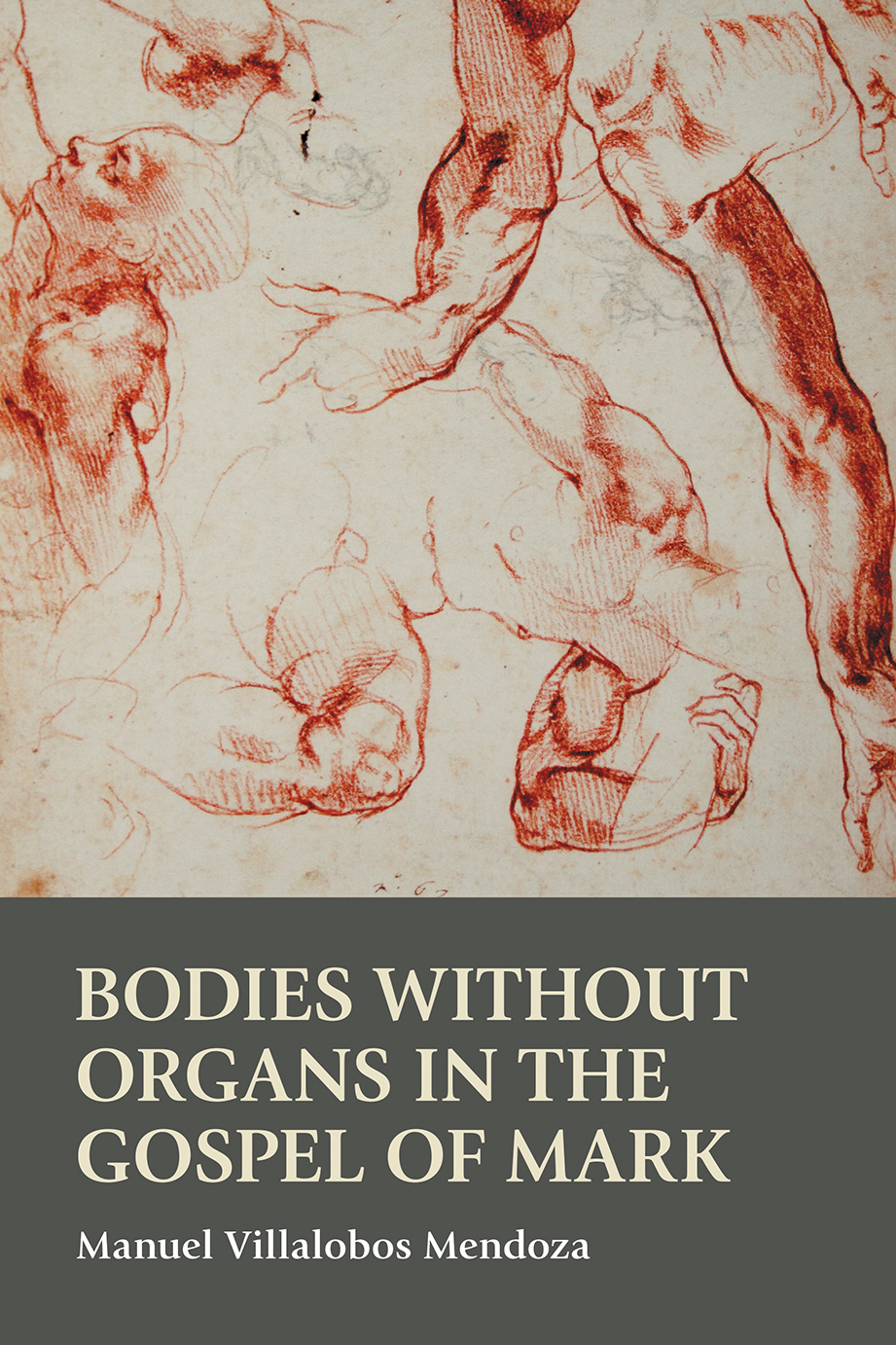

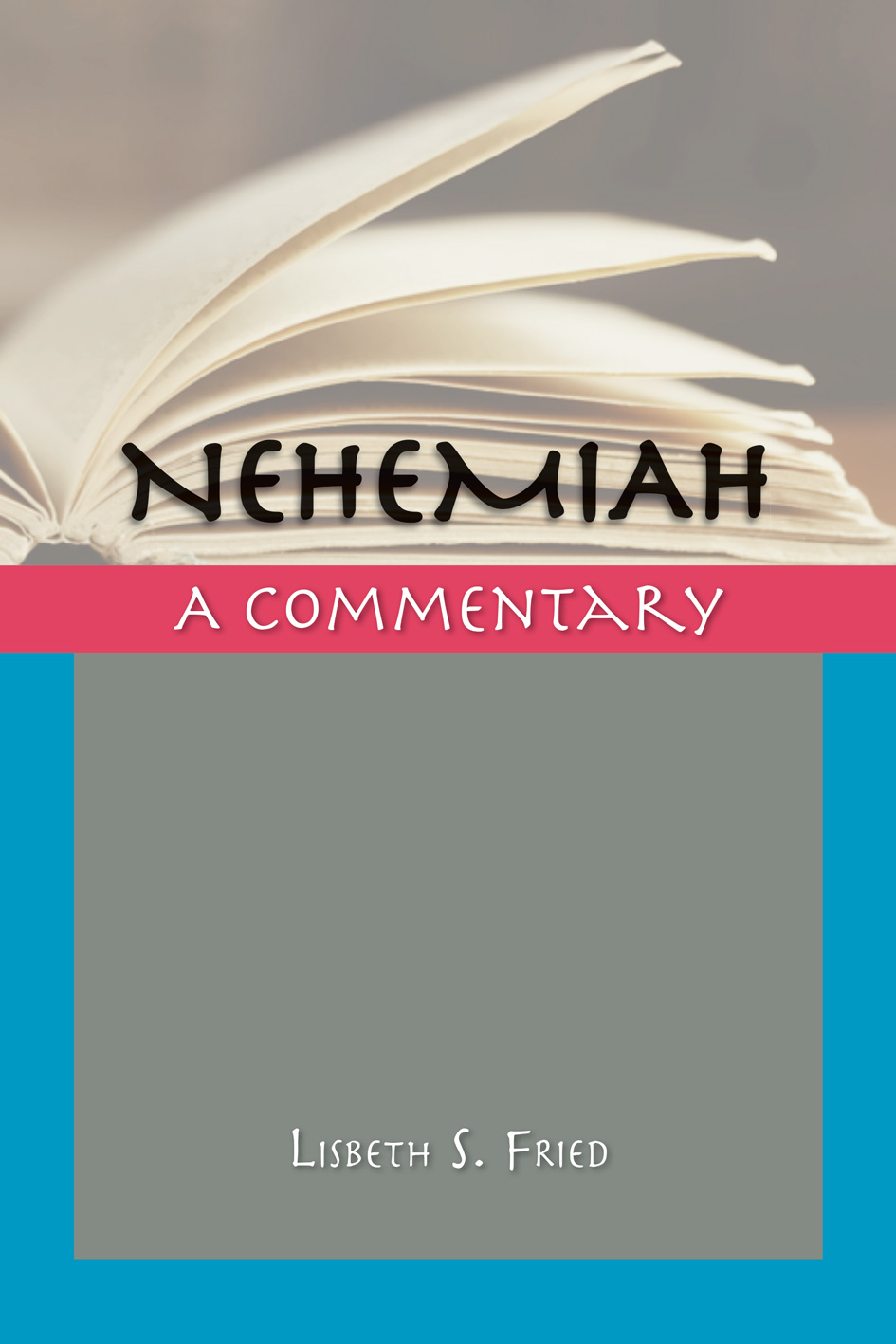

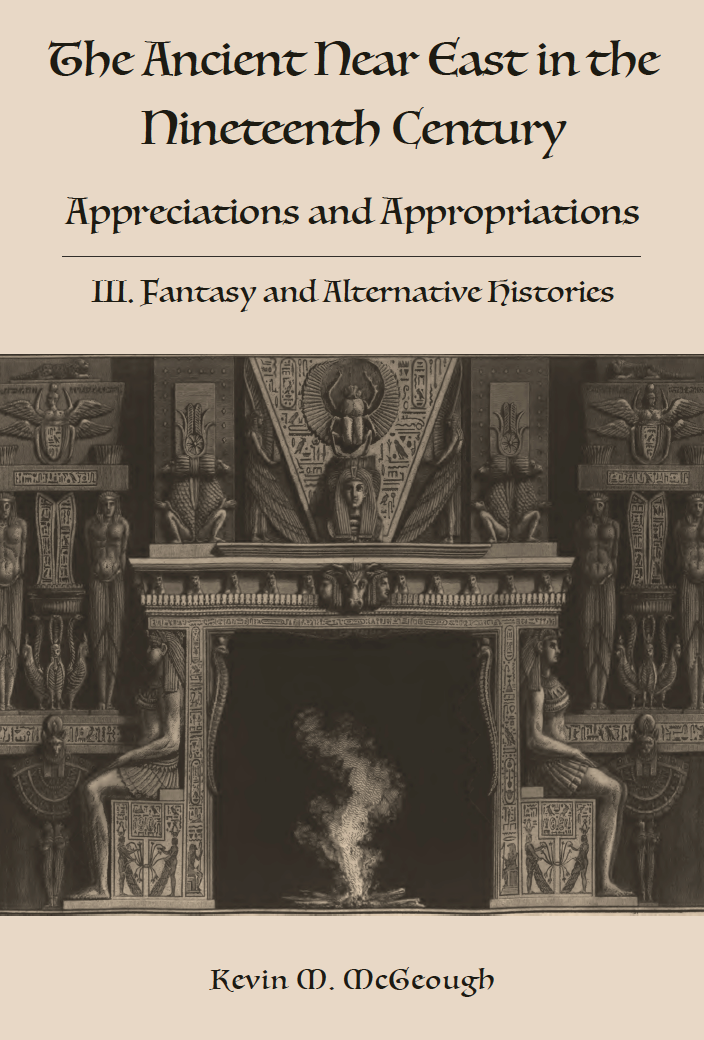
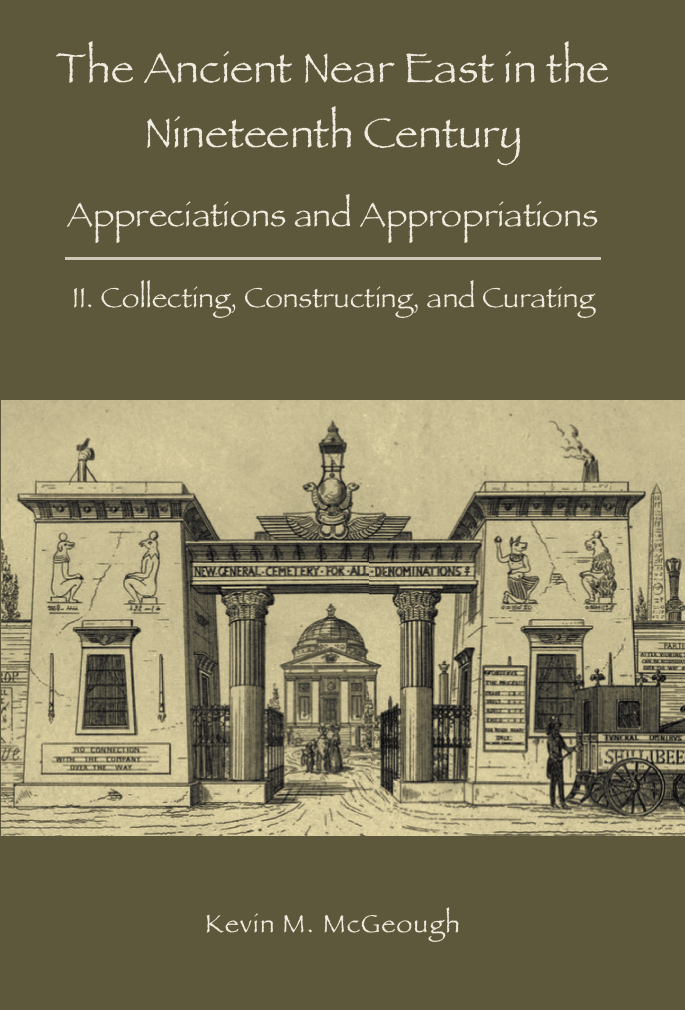

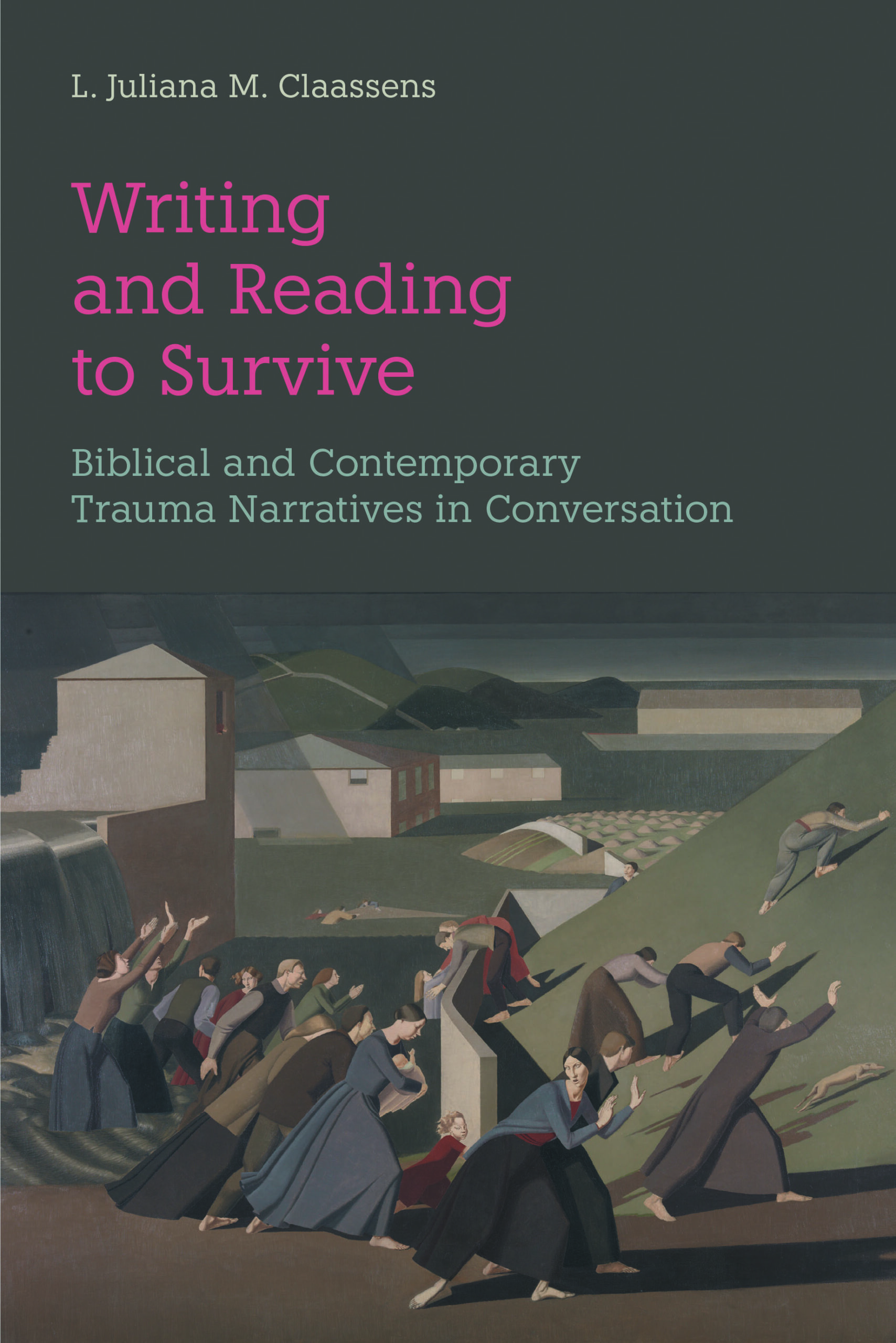
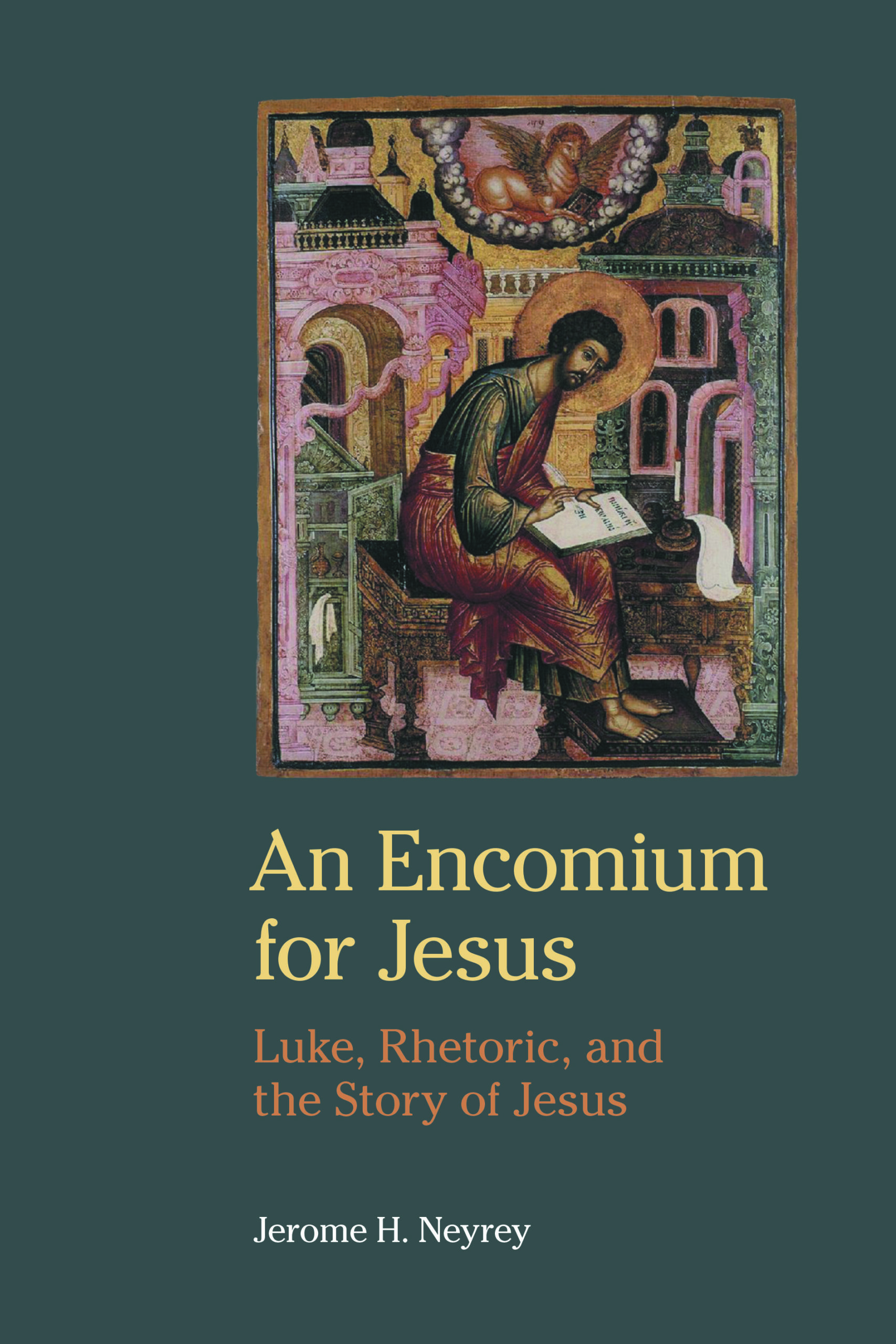
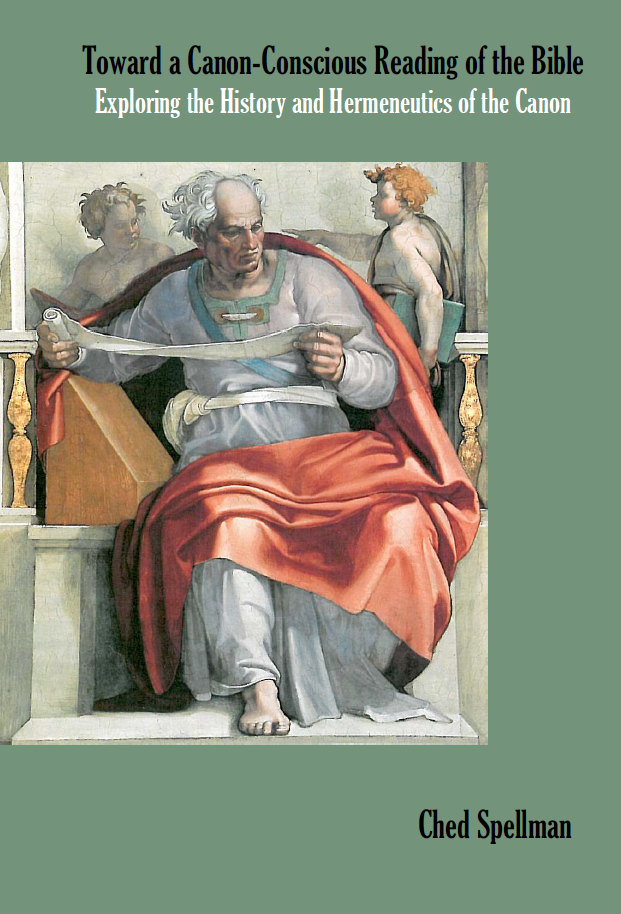

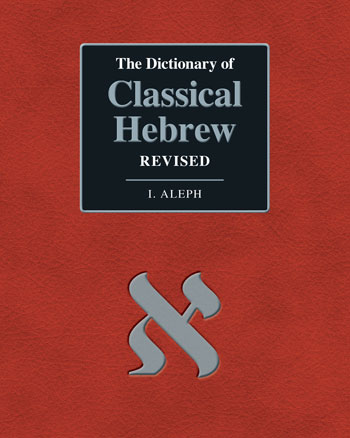

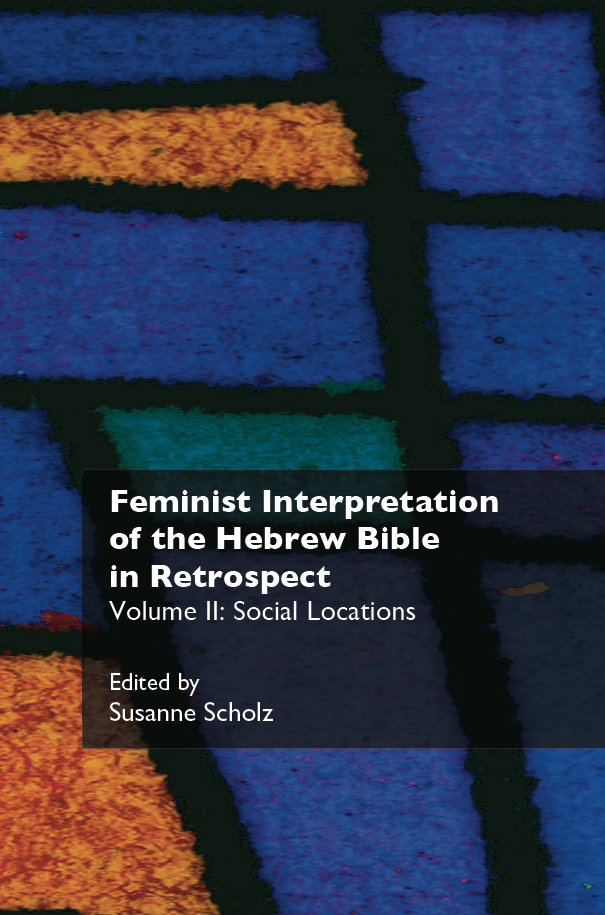

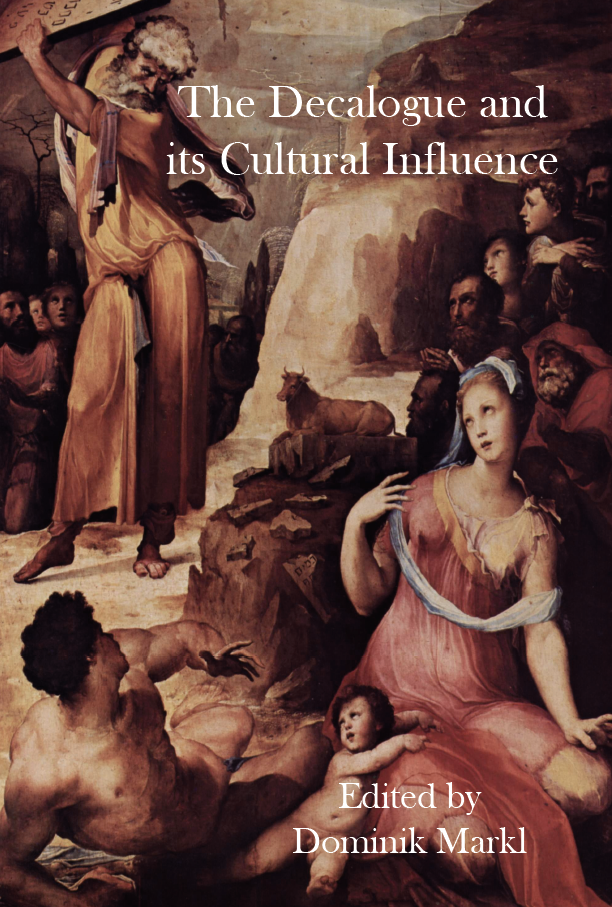
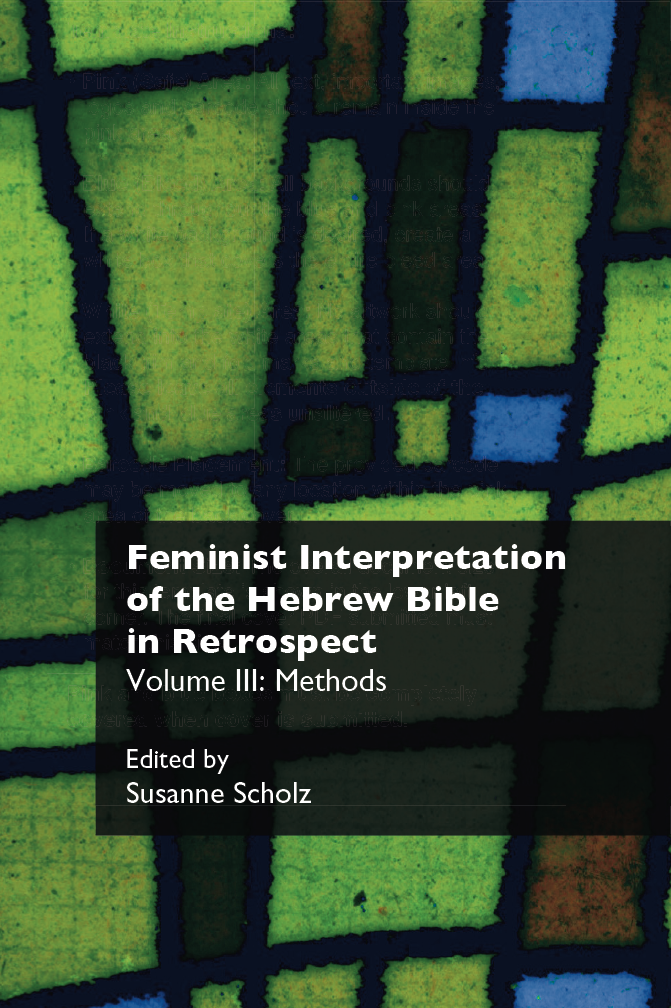
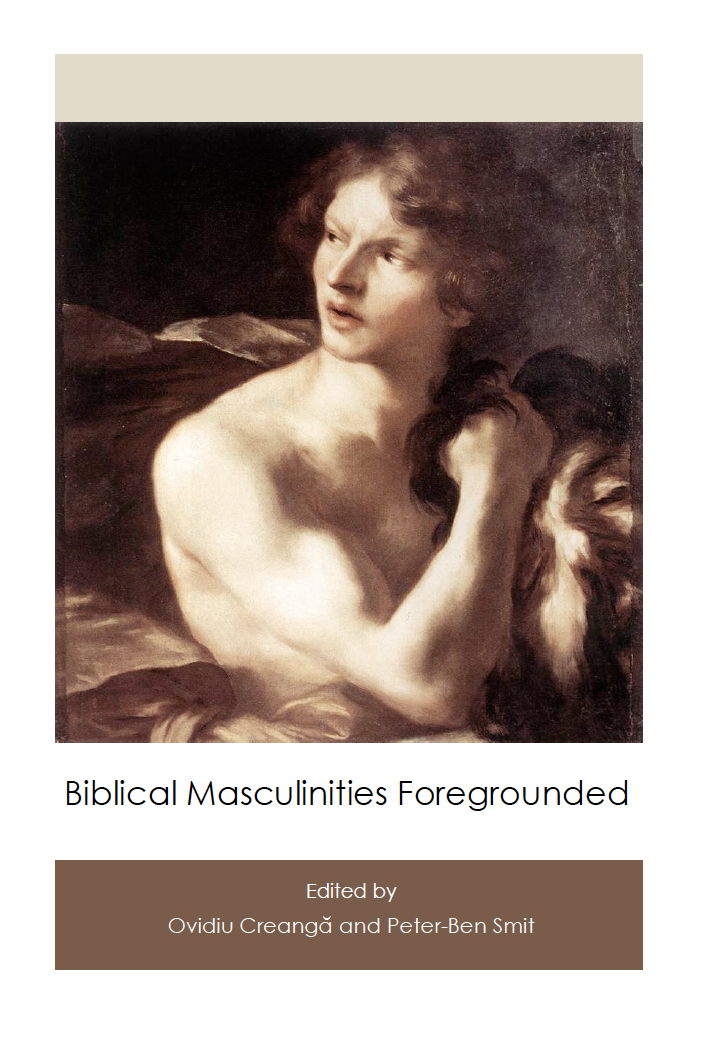
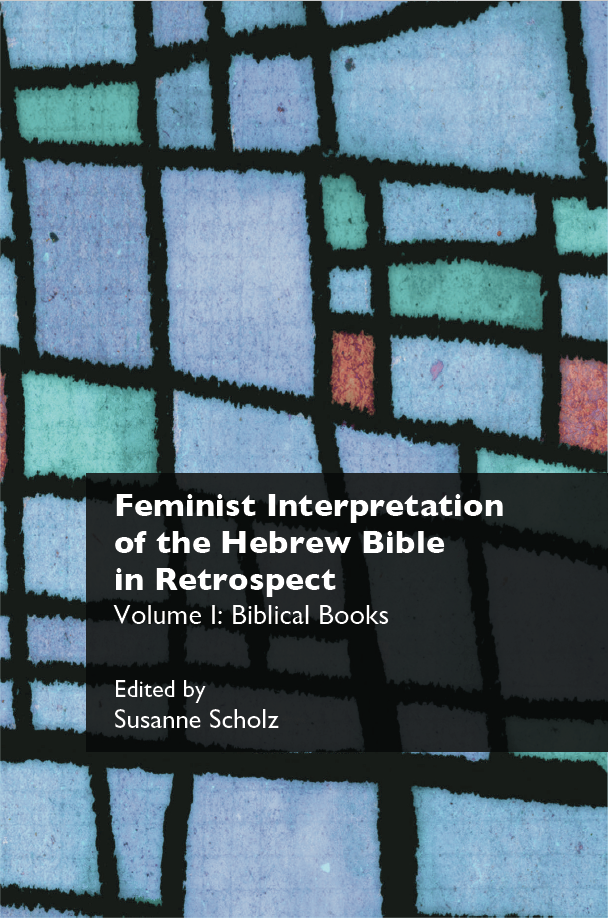
Nahum, Habakkuk and Malachi
Nahum, Habakkuk and Malachi